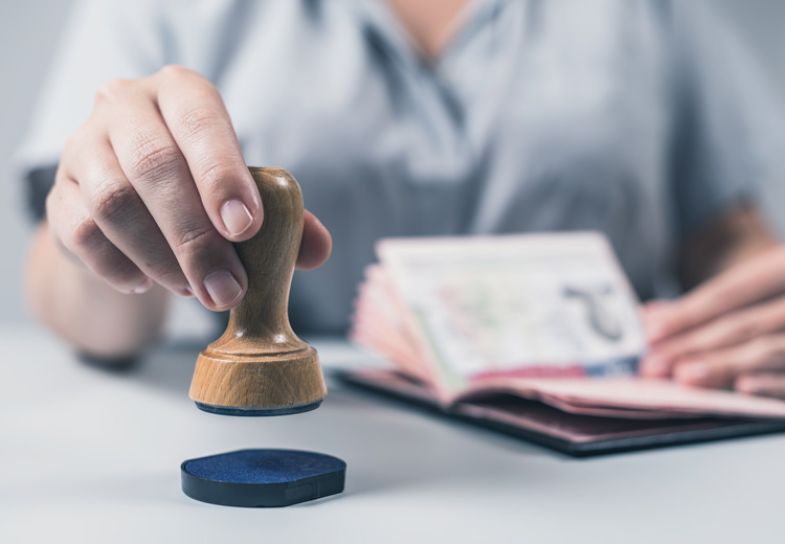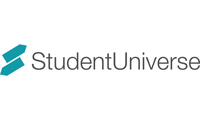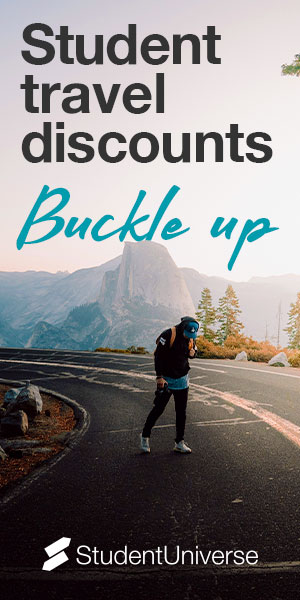
What type of visa do I need? What documents will I be asked for? This guide explains visa requirements when studying in the US
If you’re not a US citizen but want to study in the US, you’ll need to acquire a student visa first. This can be a long process and it’s not always the simplest – but the benefits of studying in the US certainly make the time, money and effort worthwhile.
The US is host to some of the world’s most prestigious institutions, from Harvard to MIT, as well as internationally renowned sights, from the Statue of Liberty to the Grand Canyon. Before you can immerse yourself in all that the US student experience has to offer, you’ll need to carefully follow the process for securing your student visa.
First, familiarise yourself with the different types of US student visas available:
- F1 visa – This visa is for any individual who wants to take some form of academic study in the US. This type of visa is the most common form of international student visa issued in the US. It is dependent on students fulfilling the minimum course requirements needed to gain full-time student status. This visa allows for part-time, on-campus employment, provided it constitutes 20 hours per week or less
- J1 visa – The J1 visa is required for any international student who wants to complete practical training in the US that is not available in their home country, but which is required to complete their academic programme. Similar employment options are available to the F1 visa, subject to the permission of the exchange visitor programme sponsor
- M1 visa – Finally, the M1 visa caters to individuals attending non-academic or vocational studies. Because this visa does not permit paid employment to be undertaken during study, individuals must demonstrate that they have sufficient funds for all tuition and living costs for the duration of their stay before the visa is granted
The visa application process
The exact visa application process varies for each US embassy or consulate, so double-check the website of the relevant body before you start the application process. In general, however, applying for a student visa in the US follows the below steps:
1. Acceptance to a Student and Exchange Visitor Program-approved school
Ensuring your chosen institution is approved by the Student and Exchange Visitor Program (SEVP) is hugely important. Only SEVP-approved universities can enrol students in the Student and Exchange Visitor Information System (SEVIS) and provide them with the documents needed to apply for a US student visa. The US government’s Study in the States website is a useful resource for finding accredited institutions. This step must be completed at least 12 months before the start of your study period in the US
2. Pay the SEVIS fee
At least three days prior to submitting your US visa application, you must pay the SEVIS fee using either an online or paper form accessible from the SEVP website. Fees vary depending on the type of visa being applied for and payment can be made via debit or credit card, cheque, international money order or Western Union transfer. Options for third-party payment (such as a sponsor) are also available
3. Complete a US student visa application
Once the SEVIS fee has been paid, you can schedule an appointment with the US consulate or embassy in your country as part of your US student visa application. The official US visa information and appointment services website will be able to direct you to the website of the relevant embassy. This step is best completed as soon as possible, as visa application times can vary and visas can be granted up to 120 days prior to the date you are due to enter the US.
To complete the online DS-160 form required as part of your application, you will need the following information:
- Your name and date of birth
- Your address and phone number
- Passport details
- Details of travel plans, and any travel companions
- Details of any previous US travel
- Your point of contact in the US
- Details of your family, work and education
- Security, background and medical health information
- SEVIS ID and address of US institution you intend to enrol at
- A recent photograph
4. Pay the visa application fee
Also known as the Machine Readable Visa (MRV) fee. Payment methods vary here, so visit the website of your embassy or consulate before completing any transaction
5. Attend a visa interview
Make an appointment online or by phone for your student visa interview at the relevant US embassy or consulate. Make sure you’re on time and are prepared to share the following documents:
- A passport valid for at least six months beyond your period of stay in the US
- Your signed SEVIS Form I-20 or DS-2019
- A SEVIS fee receipt
- Your DS-160 application confirmation page with barcode and application ID number
- The MRV fee payment receipt
- A printed copy of the visa interview appointment letter
- One to two photographs in the format requested
You may also need the following additional documents: test scores or diplomas from previously attended educational institutions, financial evidence, and written lists of prior schools and employers.
What about working holiday visas?
If you are coming to the US purely to complete an internship or work at a summer camp, you’ll probably need a J1 visa. If you are already in the country on an F1 student visa, then this will also be suitable for temporary work – but some differences apply.
F1 visa holders can complete unpaid or campus-based internships without needing to complete additional paperwork. However, you will be allowed to work for up to 20 hours a week. Off-campus work does remain an option, such as via curricular practical training, but some approval will be required first.
Those applying for a J1 visa should act through their designated sponsor. For example, summer camp programme operators will be able to advise you on securing your J1 visa. BUNAC can also assist students applying to the Work America scheme.
Whether you want to focus purely on studying or combine learning with part-time work, don’t be overwhelmed by US student visa requirements. If you follow the above guide and complete the relevant documents carefully, there’s no reason you can’t enjoy a fantastic time studying in the US.
Once you've sorted your visa, you'll need to book a flight. Online travel agency Student Universe has been created for students and offers exclusive student discounts on flights to the US that you won't find anywhere else.
Find out more about StudentUniverse.












